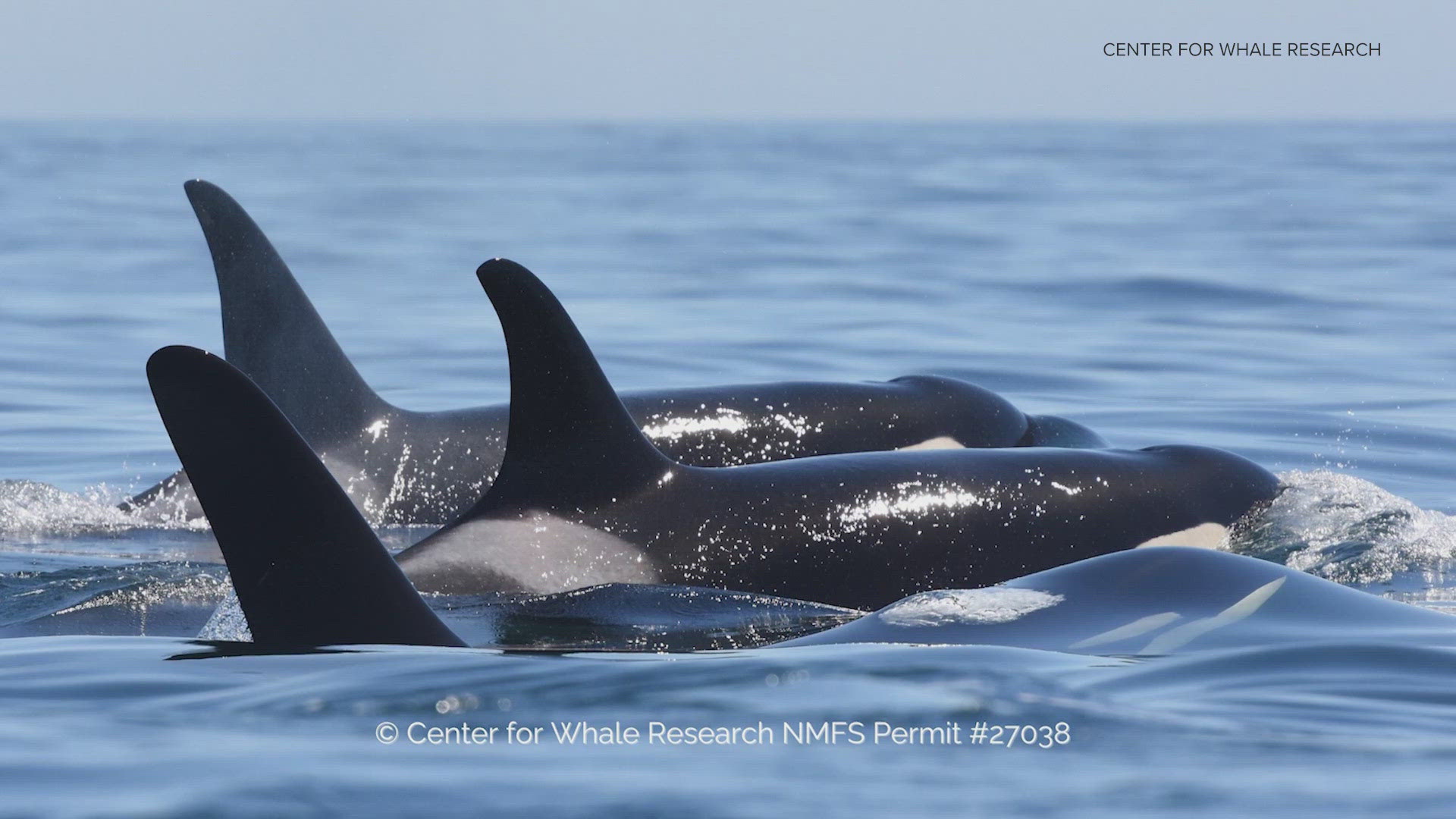WHIDBEY ISLAND STATION, Wash. — Endangered Southern Resident orcas were seen in Puget Sound Saturday, the first whales to be see in the area since April.
This was the first autumn sighting of the orcas by researchers, according to the Orca Network, and seen swimming between Whidbey Island and the Kitsap Peninsula.
The orcas seen are members of the J pod, confirmed by the Orca Network’s Whale Sighting Network and the Center for Whale Research.
“Puget Sound is a key foraging area for Southern Residents in the fall. They regularly travel into this region pursuing Chum salmon, which make up a large majority of their diet during the fall and early winter,” said Dr. Michael Weiss, research director at the Center for Whale Research on San Juan Island.
Southern Resident orcas eat mostly Chinook and Chum salmon, and the decline in salmon runs over the past few decades is a strong factor in the population’s endangered status.
October is Orcas Salmon Month, said Howard Garrett, the Orca Network president. The month raises awareness for the vital connection between the return of the salmon and the health of endangered Southern Resident orcas, Garrett said.
"Orca Salmon Month is also a reminder that this is the beginning of the season when we who live near the inland waters of the greater Puget Sound region are blessed with visits from our beloved Southern Resident orcas," said executive director Susan Berta. "It’s time to keep watch for them and hope for the thrill of catching a glimpse as they pass along our shores."
Two distinct orcas populations exist in Washington’s waters. Bigg’s orcas eat marine mammals, while Southern Resident orcas are sustained by salmon.
There’s also a stark difference in numbers. While there are approximately 500 Bigg’s orcas, there are only 73 Southern Resident orcas.
A study published in April this year found that the Southern Resident population has been declining by about one whale per year. Researchers predict less than two dozen will be left within a century.
Most researchers agree on several of the key problems the population faces, such as pollutants and a loss of food.
In addition, noise and disruption by boat traffic can inhibit a whale’s ability to find food to survive on, according to the Orca Network.
Current state laws require boaters to stay at least 300 yards away from Southern Residents, however, the minimum distance increases to 1,000 yards away on Jan. 1, 2025.

